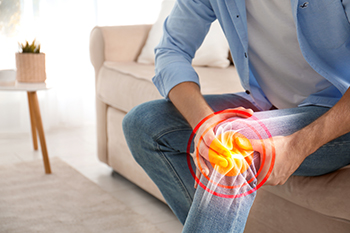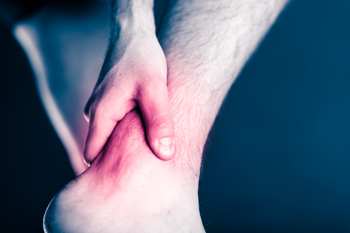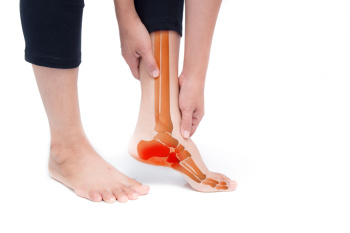Blog

Stress and low energy often go hand in hand, leaving you feeling drained and unable to focus. Chronic stress triggers the release of cortisol, a hormone that can disrupt sleep, cause muscle tension, and sap your energy over time. Add poor posture or physical strain, and your body feels even more fatigued. This ongoing cycle of stress and low energy does not just affect your mind, it impacts your body too. Tight muscles, misaligned joints, and reduced blood flow can contribute to the problem, creating a downward spiral. A chiropractor can help by addressing the physical toll of stress. Adjustments release tension, improve circulation, and support better nervous system function. By restoring balance to your body, chiropractic care can enhance your energy levels and help you better manage stress. If you feel stressed, tired, and want relief, it is suggested that you visit a chiropractor.
Experiencing ongoing stress and low energy can wear down both body and mind, making even routine tasks feel overwhelming. The body’s stress response, designed for short bursts of activity, can exhaust physical and mental reserves when constantly activated, leaving a feeling of fatigue and burnout.
Chiropractic care offers a supportive way to manage these challenges by focusing on the body's alignment and nervous system function. Misalignment in the spine can increase tension, disrupting nerve signals and possibly contributing to feelings of low energy. Gentle adjustments can help relieve this tension, supporting better nervous system communication, which may encourage relaxation and boost energy levels.
Incorporating chiropractic care into a wellness routine can offer a holistic approach to managing stress and low energy, emphasizing balance, relaxation, and overall vitality for a more energized and resilient life.
1. How does stress affect the spine, and how can chiropractic care help?
Stress often leads to muscle tension and poor posture, which strain the spine. Chiropractic adjustments relieve this tension and promote better alignment.
2. How does chiropractic care improve sleep for better energy levels?
Adjustments relieve pain and tension, making it easier to fall asleep and stay asleep. Better rest directly boosts energy and resilience to stress.
If you have any questions please feel free to contact our office located in Bellmore, NY .

Arthritis causes inflammation, stiffness, and pain in the joints. Luckily, arthritis symptoms can be relieved with gentle, targeted adjustments and certain exercises and stretches. These can strengthen the muscles surrounding the joints, improving stability and reducing joint stress over time.
Alleviate pain and joint stiffness. Contact our office today.
 Low back pain is a common condition ranging from a mild ache to severe, debilitating discomfort. Low back pain can stem from muscle strain, joint dysfunction, herniated discs, or poor posture. Chiropractors use a variety of interventions focusing on natural, non-invasive techniques tailored to the individual. Spinal adjustments are a core treatment, helping to restore proper alignment, reduce joint restriction, and alleviate nerve irritation. Soft tissue therapies, like massage or myofascial release, are often used to relax tight muscles and improve circulation. Chiropractors may also recommend targeted exercises to strengthen core muscles, improve flexibility, and support recovery. Lifestyle modifications, such as ergonomic advice or posture correction, are integrated to prevent future issues. If low back pain is disrupting your life, it is suggested that you schedule an appointment with a chiropractor who can provide relief and promote long-term spinal health.
Low back pain is a common condition ranging from a mild ache to severe, debilitating discomfort. Low back pain can stem from muscle strain, joint dysfunction, herniated discs, or poor posture. Chiropractors use a variety of interventions focusing on natural, non-invasive techniques tailored to the individual. Spinal adjustments are a core treatment, helping to restore proper alignment, reduce joint restriction, and alleviate nerve irritation. Soft tissue therapies, like massage or myofascial release, are often used to relax tight muscles and improve circulation. Chiropractors may also recommend targeted exercises to strengthen core muscles, improve flexibility, and support recovery. Lifestyle modifications, such as ergonomic advice or posture correction, are integrated to prevent future issues. If low back pain is disrupting your life, it is suggested that you schedule an appointment with a chiropractor who can provide relief and promote long-term spinal health.
Back pain
Finding Lasting Relief for Back Pain Through Chiropractic Care
Back pain is one of the most common issues people face, often caused by poor posture, muscle strain, or spinal misalignment. This pain can range from a dull ache to sharp, debilitating discomfort, affecting daily life and mobility. Chiropractic care offers a non-invasive, drug-free approach to managing and relieving back pain by addressing its root causes.
Chiropractors assess spinal alignment and look for areas of tension, misalignment, or restricted movement that may contribute to back pain. Using targeted spinal adjustments, chiropractors help realign the vertebrae, relieving pressure on nerves, and reducing inflammation. These adjustments encourage natural healing, reduce muscle tension, and improve overall spinal function, which can lead to lasting relief.
In addition to adjustments, chiropractors often recommend exercises to strengthen core and back muscles, supporting proper posture and spinal alignment. They may also offer guidance on adjustments for daily activities to prevent further strain. Lifestyle recommendations, such as stretches, proper lifting techniques, and movement tips, help patients maintain a healthy back.
How Often Should I See a Chiropractor for Lower Back Pain?
Frequency depends on the severity of pain, but many patients benefit from regular visits to maintain alignment and pain relief.
Why Choose Chiropractic Care for Back Pain?
Chiropractic care provides a comprehensive approach to managing back pain, promoting long-term relief and better spinal health without reliance on medications. Regular visits can lead to improved mobility, reduced pain, and a healthier, more active life.
How Quickly Can I Expect Relief from Back Pain with Chiropractic Care?
Relief varies, but many patients experience reduced pain and improved function after just a few sessions
If you have any questions, please feel free to contact our office located in Bellmore, NY . We offer the newest diagnostic and treatment technologies for all your foot care needs.

Pickleball’s fast lateral movements make it an exciting sport, especially for older athletes, but they also increase the potential for musculoskeletal injuries. These injuries often involve the lower back, hips, and legs due to repetitive strain and sudden directional changes. Poor footwear, uneven court surfaces, and incorrect techniques amplify these risks. Chiropractors recommend wearing supportive shoes designed for lateral motion and cushioning to protect joints and prevent overuse injuries. Playing on well-maintained courts also reduces hazards, while mastering safe movement techniques, like pivoting instead of backpedaling, lowers stress on the spine and joints. A proper warm-up routine and regular chiropractic adjustments can enhance flexibility, balance, and overall joint health, making the body more resilient to injury. If pain or stiffness persists after playing, it is suggested that you see a chiropractor for care.
Low back pain is one of the most common causes of discomfort and reduced mobility, affecting people across all age groups. It often originates from issues such as muscle strain, joint dysfunction, or poor posture. Everyday activities like bending, lifting, or prolonged sitting can aggravate the pain, turning a temporary ache into a persistent problem. If left untreated, acute low back pain can become chronic, restricting movement and diminishing quality of life.
The spine’s alignment plays a critical role in back health, as misalignments can create tension, inflammation, and nerve irritation. Addressing these underlying issues is essential for relief and long-term recovery. Chiropractic care offers a non-invasive solution by focusing on spinal health through targeted adjustments and personalized recommendations. If low back pain is interfering with your daily life, seeing a chiropractor can help alleviate discomfort and restore function naturally.
1. How does chiropractic care help low back pain during pregnancy?
Chiropractors use gentle, pregnancy-safe adjustments to reduce stress on the spine and pelvis, helping alleviate low back pain caused by changes in posture and weight distribution.
2. Does chiropractic care work for chronic low back pain caused by old injuries?
Yes, chiropractors address lingering misalignments and stiffness caused by old injuries, helping restore function and reduce chronic pain.
For additional information, please contact at Bellmore, NY
 Pregnancy brings many physical changes, often leading to back pain as the body adjusts to a growing baby. The added weight shifts the center of gravity, increasing strain on the spine and pelvis. Hormonal changes loosen ligaments, which can cause instability and discomfort. Chiropractic care offers a natural, non-invasive way to relieve pregnancy-related back pain by improving spinal alignment and reducing pressure on nerves. Gentle adjustments help restore balance, alleviate tension, and enhance overall mobility. Many pregnant individuals find that chiropractic care not only eases pain, but also improves posture and prepares the body for childbirth. Regular care can also address sciatica, pelvic discomfort, and joint pain. Since chiropractors use specialized techniques for pregnancy, it is a safe and effective option for many expecting parents. If you are pregnant and experiencing back pain, it is suggested that you see a chiropractor for care.
Pregnancy brings many physical changes, often leading to back pain as the body adjusts to a growing baby. The added weight shifts the center of gravity, increasing strain on the spine and pelvis. Hormonal changes loosen ligaments, which can cause instability and discomfort. Chiropractic care offers a natural, non-invasive way to relieve pregnancy-related back pain by improving spinal alignment and reducing pressure on nerves. Gentle adjustments help restore balance, alleviate tension, and enhance overall mobility. Many pregnant individuals find that chiropractic care not only eases pain, but also improves posture and prepares the body for childbirth. Regular care can also address sciatica, pelvic discomfort, and joint pain. Since chiropractors use specialized techniques for pregnancy, it is a safe and effective option for many expecting parents. If you are pregnant and experiencing back pain, it is suggested that you see a chiropractor for care.
Pregnancy is a transformative experience, but the physical changes can bring challenges like low back pain, leg pain, and sciatica. These discomforts often result from the extra weight and shifts in the body’s center of gravity, placing stress on the spine and pelvis.
Chiropractic care provides a gentle, non-invasive approach to managing these symptoms. Specialized techniques for pregnant individuals help realign the spine and reduce pressure on the nerves, addressing sciatica and related leg pain. Adjustments also promote proper pelvic alignment, potentially easing tension and enhancing mobility.
Beyond pain relief, chiropractic care supports overall wellness, improving posture and helping the body prepare for childbirth. Many find that regular visits reduce discomfort and improve quality of life throughout pregnancy.
1. Is it safe to see a chiropractor in the first trimester?
Absolutely. Prenatally-trained chiropractors use gentle, specific techniques suitable for every stage of pregnancy, including the first trimester.
2. Can chiropractic adjustments reduce swelling in my feet and ankles?
While chiropractic care does not directly treat swelling, improving circulation through spinal alignment can support your body’s natural fluid drainage, potentially easing swelling.
For additional information, please contact Dr. Kelly's Health & Healing Grotto at Bellmore, NY.
Read More About Pregnancy and Lower Back Pain

Pickleball is a fast-growing sport blending elements of tennis and badminton and requires agility, balance, and swift lateral movements that can cause strain on the musculoskeletal system. From a chiropractic perspective, the rapid changes in direction and high-intensity rallies increase the likelihood of sprains, strains, and joint misalignments, particularly in the lower back, hips, and knees. Seniors, a large demographic of players, are especially at risk due to reduced flexibility, balance, and bone density. To minimize injuries, chiropractors emphasize the importance of a proper warm-up to loosen muscles and prepare joints for dynamic movements. Maintaining spinal alignment through regular chiropractic care can enhance mobility, balance, and overall performance. Players should also focus on core strength and posture to reduce the risk of falls and injuries. If pain or discomfort arises during or after play, it is suggested that you obtain chiropractic adjustments and soft tissue therapies to aid recovery and prevent further issues.
Knee Pain
Knee pain is a frequent complaint that can arise from injuries, overuse, arthritis, or misalignments in the body. This pain can disrupt daily life, limiting movement and impacting quality of life. Knee discomfort often develops when the body’s structural alignment is off, which places extra strain on the knee joint and surrounding muscles and ligaments.
Chiropractic care focuses on reducing knee pain by assessing and addressing alignment throughout the lower body. Gentle adjustments may be used to realign the knee and correct imbalances in the hip, pelvis, and spine that contribute to excessive knee stress. Restoring alignment in these areas can relieve pressure on the joint, ease pain, and promote improved mobility.
To support these adjustments, chiropractors often incorporate exercises, stretches, and lifestyle guidance to improve strength and flexibility around the knee. Strengthening muscles surrounding the joint can offer additional stability, helping to prevent future injuries.
Is knee pain treatment going to be painful?
Patients may worry that adjustments or other treatments will hurt. Chiropractors reassure patients that the techniques used are generally gentle, with any discomfort being mild and short-lived. They work within the patient’s pain tolerance.
How many sessions will I need?
Frequency and number of sessions depend on the pain’s severity and the patient’s response to treatment. Chiropractors often suggest a treatment plan tailored to the individual, sometimes starting with frequent visits and tapering as improvement occurs.
If you have any questions please feel free to contact our office located in Bellmore, NY .

As pickleball surges in popularity, especially among older adults, so does the incidence of injuries with Achilles tendon ruptures topping the list. This fast-paced sport combines quick starts, sharp turns, and sudden stops, placing significant strain on the lower body. Older male players are particularly vulnerable due to reduced flexibility, weaker tendons, and a greater likelihood of prior wear-and-tear injuries. Overuse and inadequate warm-ups can further increase the risk of Achilles tendon damage during abrupt lunges or rapid changes in direction. Proper preparation, including stretching, strengthening exercises, and wearing supportive footwear is imperative for minimizing injury risks. Taking rest days and listening to your body also play a vital role in prevention. If you sustained an injury or have persistent lower limb pain, it is suggested that you consult a chiropractor to receive prompt treatment.
Strains and sprains are common injuries that can affect people of all ages and activity levels. A strain involves the stretching or tearing of a muscle or tendon, while a sprain occurs when ligaments, the tissues connecting bones, are overstretched or torn. These injuries often result from sudden movements, falls, or overuse during physical activity. Symptoms include pain, swelling, bruising, and limited mobility in the affected area.
Mild strains and sprains can typically be managed with rest and compression. However, more severe cases may require attention to ensure proper healing and prevent long-term issues.
Chiropractic care provides a valuable addition to the healing process for strains and sprains. Chiropractors address not only the immediate injury but also any misalignments or imbalances caused by it. Through precise adjustments, they can help reduce tension in the surrounding joints and tissues, alleviating pain and improving mobility. Soft tissue therapies and personalized exercise plans further enhance recovery by strengthening the injured area and supporting proper alignment.
1. What’s the difference between a sprain and a strain?
A sprain involves stretched or torn ligaments, while a strain affects muscles or tendons. Chiropractors address both by focusing on the affected area and supporting healing.
2. Can chiropractic care help sprains or strains in areas other than the back?
Yes, chiropractors treat sprains and strains in joints like the ankle, knee, or wrist, using techniques to reduce inflammation and improve mobility.
For additional information, please contact at Bellmore, NY.
 Ulnar nerve compression, also known as cubital tunnel syndrome, occurs when the ulnar nerve is pinched, often at the elbow. This nerve runs from the neck to the hand, controlling sensations in the ring and pinky fingers and aiding hand movement. Compression can cause numbness, tingling, or weakness in the affected hand and arm, sometimes worsening with bending the elbow or prolonged pressure, like resting on the elbows or repetitive activities. Athletes, individuals with desk jobs, or those performing repetitive arm movements are most at risk. Chronic compression can lead to muscle wasting and reduced hand function. Chiropractors address ulnar nerve compression by identifying misalignments in the neck, shoulder, or elbow that may be contributing to nerve irritation. Adjustments, soft tissue work, and ergonomic advice can help relieve pressure, restore mobility, and promote long-term nerve health. If you have this type of pain, it is suggested that you schedule an appointment with a chiropractor for non-invasive treatment.
Ulnar nerve compression, also known as cubital tunnel syndrome, occurs when the ulnar nerve is pinched, often at the elbow. This nerve runs from the neck to the hand, controlling sensations in the ring and pinky fingers and aiding hand movement. Compression can cause numbness, tingling, or weakness in the affected hand and arm, sometimes worsening with bending the elbow or prolonged pressure, like resting on the elbows or repetitive activities. Athletes, individuals with desk jobs, or those performing repetitive arm movements are most at risk. Chronic compression can lead to muscle wasting and reduced hand function. Chiropractors address ulnar nerve compression by identifying misalignments in the neck, shoulder, or elbow that may be contributing to nerve irritation. Adjustments, soft tissue work, and ergonomic advice can help relieve pressure, restore mobility, and promote long-term nerve health. If you have this type of pain, it is suggested that you schedule an appointment with a chiropractor for non-invasive treatment.
Tennis and Golfer's Elbow
Tennis and golfer's elbow, or medial epicondylitis, is a condition caused by inflammation or irritation of the tendons on the inner side of the elbow. Despite its name, this condition is not limited to golfers and tennis players. It can affect anyone engaging in repetitive wrist or forearm motions, such as throwing, lifting, or typing. Symptoms include pain, tenderness, and stiffness on the inner elbow, sometimes extending into the forearm. Weak grip strength and difficulty with everyday tasks are common complaints.
Chiropractic care can play a role in managing golfer's elbow by addressing muscle tension and improving joint function. Gentle adjustments may reduce strain on the affected area, while soft tissue therapies and stretching techniques can help alleviate discomfort and promote healing. Chiropractors may also provide advice on modifying activities to reduce stress on the tendons, offering a holistic approach to recovery and prevention.
1. Can tennis or golfer’s elbow occur without playing sports?
Yes, these conditions are often caused by repetitive motions like typing, lifting, or using tools. Chiropractors can assess and treat the root causes of these repetitive strain injuries.
2. Should I avoid chiropractic care during the acute phase of tennis or golfer's elbow?
Gentle adjustments and soft tissue techniques can still be beneficial, reducing inflammation and improving mobility without aggravating the injury.
For additional information, please contact at Bellmore, NY.

Arthritis causes inflammation, stiffness, and pain in the joints. Luckily, arthritis symptoms can be relieved with gentle, targeted adjustments and certain exercises and stretches. These can strengthen the muscles surrounding the joints, improving stability and reducing joint stress over time.
Alleviate pain and joint stiffness. Contact our office today.
 Numbness and tingling sensations often result from nerve entrapment, a condition where nerves are compressed or pinched by surrounding tissues such as muscles, bones, or ligaments. This can occur due to repetitive movements, poor posture, injuries, or structural imbalances in the body. Common sites of entrapment include the neck, lower back, wrists, and elbows, leading to symptoms in the hands, arms, legs, or feet. These sensations range from mild pins and needles to persistent discomfort and weakness. Left untreated, nerve entrapment can cause long-term nerve damage and impact mobility. Chiropractic care focuses on relieving pressure on the affected nerves through precise spinal adjustments and soft tissue therapies. Chiropractors also address contributing factors like posture and muscle tension while recommending exercises and lifestyle changes. If you have persistent numbness or tingling, it is suggested that you see a chiropractor for care.
Numbness and tingling sensations often result from nerve entrapment, a condition where nerves are compressed or pinched by surrounding tissues such as muscles, bones, or ligaments. This can occur due to repetitive movements, poor posture, injuries, or structural imbalances in the body. Common sites of entrapment include the neck, lower back, wrists, and elbows, leading to symptoms in the hands, arms, legs, or feet. These sensations range from mild pins and needles to persistent discomfort and weakness. Left untreated, nerve entrapment can cause long-term nerve damage and impact mobility. Chiropractic care focuses on relieving pressure on the affected nerves through precise spinal adjustments and soft tissue therapies. Chiropractors also address contributing factors like posture and muscle tension while recommending exercises and lifestyle changes. If you have persistent numbness or tingling, it is suggested that you see a chiropractor for care.
Numbness and Tingling
Numbness and tingling sensations can disrupt daily life, often arising from issues like nerve compression, poor circulation, or structural imbalances. These symptoms, commonly felt in the hands, feet, arms, or legs, range from mild pins and needles to persistent discomfort. Conditions such as herniated discs, carpal tunnel syndrome, or peripheral neuropathy are frequent causes, often linked to irritated or restricted nerve pathways. Left untreated, these sensations may worsen, leading to reduced mobility or further nerve damage.
Chiropractic care addresses numbness and tingling by focusing on the root causes. A chiropractor evaluates spinal alignment, nerve function, and contributing factors like posture or muscle tension. Through targeted adjustments and therapies, they relieve nerve compression, improve circulation, and restore function. Lifestyle recommendations complement treatment, offering long-term relief and promoting nerve health.
1. Are numbness and tingling always nerve-related?
Not always. While often linked to nerve compression, these sensations can also result from poor circulation or systemic conditions. Chiropractors assess for nerve involvement and recommend appropriate care or referrals.
2. Can numbness and tingling affect only one side of the body?
Yes, these symptoms can be unilateral, often indicating localized nerve compression or structural imbalances, which chiropractors can identify and treat.
For additional information, please contact at Bellmore, NY.
